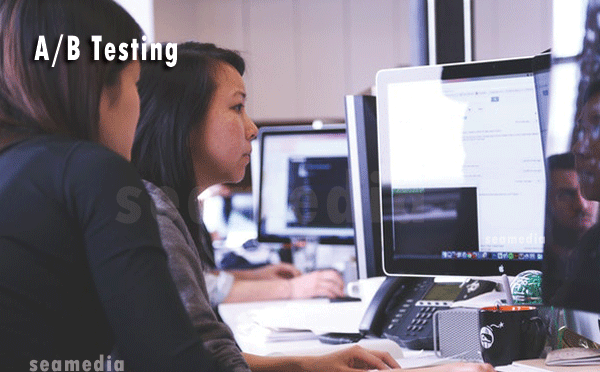Testing is a critical phase in the software development lifecycle. As a web development company, we employ numerous testing strategies to identify and address issues in our products. Throughout each stage of the application development process, it’s essential to test whether the application meets the expected outcomes. This rigorous approach ensures the quality of products offered by an eCommerce web development company.
Let’s discuss A/B Testing on an eCommerce website. But first, we need to understand what A/B Testing is.
What is A/B Testing?
A/B Testing involves comparing two versions of a web page to determine which one performs better. We label these two versions as Version A and Version B. The test involves showing both versions to similar visitors simultaneously to see which version achieves a higher conversion rate.
An eCommerce website has specific goals, primarily aimed at encouraging visitors to purchase products, thus increasing the conversion rate and propelling the website to higher success levels.
How and What to Test?
Testing should be aligned with your set goals, whether they involve increasing user registrations, conversion rates, click-through rates (CTR), sales, or reducing bounce rates. For instance, if the goal is to increase registered users, you would typically test at least the following elements:
- Wording, font size, and style used in the registration form
- Size and structure of the form
- Mandatory fields and their likelihood of being filled out by users
- Title and description
- Display of website policies and conditions
- Overall website layout
A/B Testing on Headlines
Headlines are crucial as they often determine whether a user stays on the page. In A/B Testing, we evaluate various headlines to ensure they are engaging enough to retain users. This is especially important on social media platforms like Facebook, Twitter, and Google Plus.
For example, in a Buffer Twitter post A/B Test, the process might look like this:
- Generate five to ten headlines for each post and let the marketing team select the best options.
- Choose the top three headlines and post them on the Buffer Twitter account at peak times to gather the most reliable data.
- Track the performance in Buffer analytics to determine the most effective headline, which will become the header of the post.
A/B Testing on Images for Social Sharing
Images also undergo A/B Testing to assess their impact on user engagement. For example, we might analyze tweets with and without images to see which type receives more retweets, shares, and favorites.
Top 10 Tools for A/B Testing
- Optimizely
- Unbounce
- VWO (Visual Website Optimizer)
- Usability Hub (Five Second Test)
- Maxymiser
- A/Bingo
- Kissmetrics
- Google Analytics
- Buffer Analytics
- AB Tasty
Conclusion A/B testing is vital for the growth of an eCommerce website. It helps you analyze and enhance specific aspects of your website. Ignoring A/B Testing could hinder the potential success and optimization of your eCommerce platform.
